Find the Best Strongest 3D Printer Filaments For Your Project
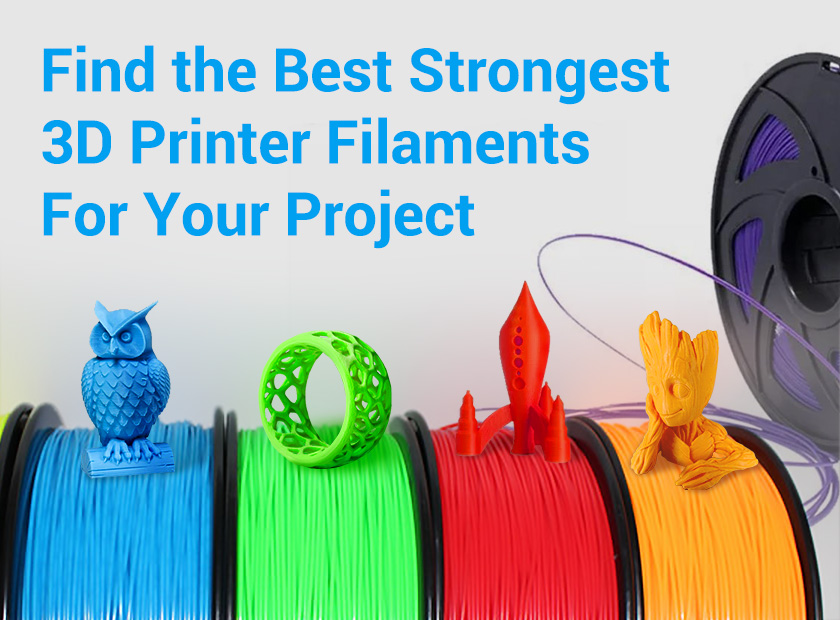
Find the Best Strongest 3d Printer Filaments For Your Project
Prologue
In the world of 3D printing, the quality of the filament used can make all the difference in the final product. 3D printing has revolutionized the manufacturing industry, and with advances in technology, we are now able to create more complex and durable objects than ever before. One of the most important factors in 3D printing is the filament material used, as it directly affects the strength and quality of the final product. With so many options on the market, it can be difficult to determine which filaments are best for your needs. So what is the strongest filament for 3d printing?
In this blog, we will provide you the seletcion list of the strongest 3D printer filaments for your project. We've researched and compared a number of filaments to bring you the top recommendations that will help you get the best results from your 3D printing projects. Whether you're a professional or a hobbyist, read on to discover the best strongest 3D printer filaments for your needs.
What is meant by strength?
Strength in the context of 3D printing can refer to different factors, including tensile strength, impact strength, tear strength, flexural strength, durability, and toughness. These attributes are important when comparing and selecting the right filament for a specific project. Tensile strength is the ability of a material to resist breakage when under tension, while impact strength is the ability of a material to absorb shock and sudden impact without breaking. Other strength metrics include flexural strength, tear strength, and elongation at break. The strongest 3D printer filaments in terms of tensile strength include polycarbonate, PETG, and PLA, while materials with good impact strength include ABS, PETG, PC, and TPU. Ultimately, the type of filament chosen depends on the specific needs of the project.
Also, what we provide is part of the strongest 3D printing filament selection list, there are still a lot of optimized filaments on update every day, so the strongest 3D printer filaments will go on more than that.
Polycarbonate
The tensile strength of the material is approximately 70 MPa.
Polycarbonate (PC) is one of the strongest 3D printer filaments, with high tensile and impact strength. Despite its strength, it can be difficult to print, which is why it may not be as popular as other printing materials.
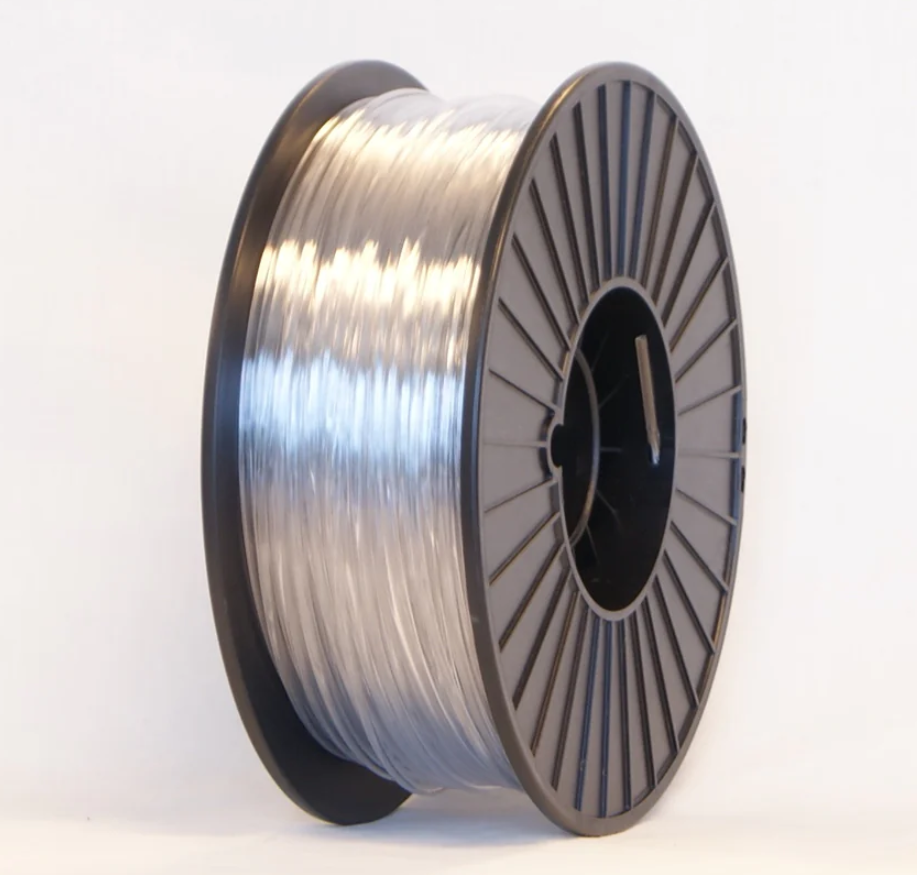
Polycarbonate has many benefits, such as its exceptional tensile and impact strength, resistance to high temperatures, and ability to print transparent parts. However, printing PC can be challenging due to its extremely high melting point and the need for very high extruder temperatures, typically at least 260°C and sometimes over 300°C. This is beyond the capabilities of most consumer-level desktop 3D printers. For best results, it's recommended to use a bed temperature of approximately 100°C.
Certain PC brands are formulated with materials that lower the melting point, but this can also negatively affect the strength and heat resistance. As a result, these brands are not ideal for producing automotive components or other end-use parts.
To achieve the best strength properties when 3D printing with PC, it is recommended to use high-temperature non-budget systems. However, even these systems may encounter challenges in controlling the material's tendency to warp.
Among the most popular PC filaments are Raise3D Premium PC, Polymaker PolyMax, and 3DXTech 3DXMax PC.
Nylon
The tensile strength of the material is approximately 50–80 MPa.
Nylon (PA) is a filament that has high strength in both the tensile and impact aspects, although it is not as sturdy as PC. Printing with nylon filament is easier, requiring an extruder temperature of around 250°C and a heated bed set to approximately 80°C.
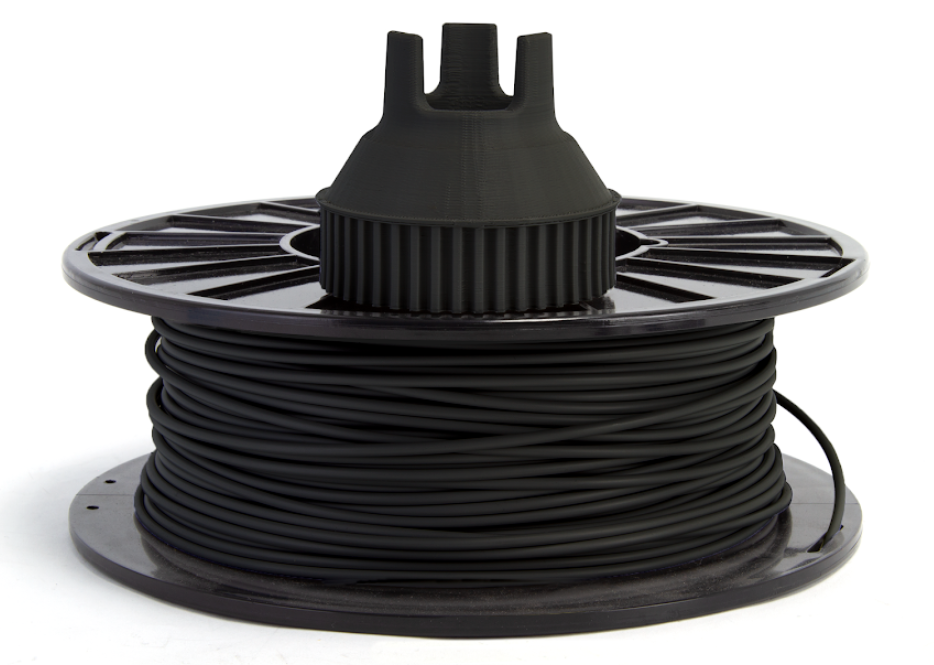
Although nylon is commonly used in powder form for selective laser sintering (SLS) to create industrial parts and prototypes, it is also available as FDM 3D printer filament. This filament is generally less expensive than PC and has a slight flexibility that may be advantageous for specific functional parts. In addition, nylon filament boasts excellent durability, surface smoothness, and layer adhesion.
Desktop printers can typically handle nylon filament, but this high-strength material does have some drawbacks. One major issue is its high hygroscopicity, which means it absorbs moisture easily, leading to problems during printing such as bubble formation in the nozzle. Additionally, like PC, nylon is prone to warping as it cools down.
Some of the widely-used nylon filaments are MatterHackers Pro Series Nylon, Ultimaker Nylon, and ColorFabb PA.
TPU
The tensile strength of the material is approximately 20–50 MPa.
Flexible filaments, such as thermoplastic polyurethane (TPU), are often not recognized for their high-strength capabilities due to their low tensile strength. However, they provide excellent impact strength, making them ideal for shock-absorbing printed objects and functional parts, like protective enclosures. As compared to rigid materials, TPU offers good abrasion and chemical resistance, as well as a high elongation at break. Nevertheless, its low tensile strength makes it unsuitable for mechanical parts.
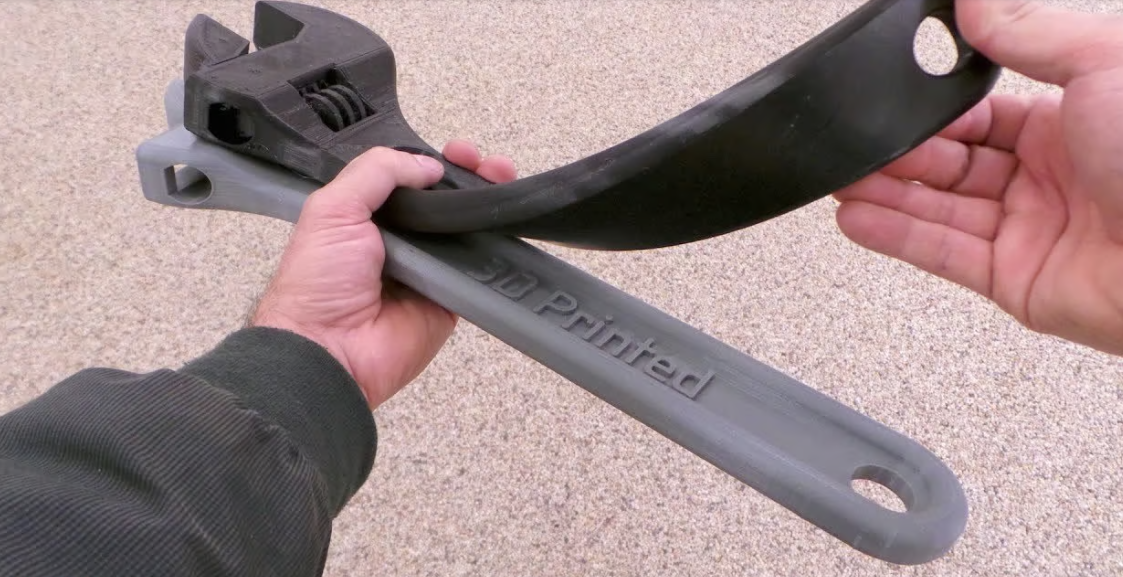
It is important to keep in mind that the ideal 3D printers for printing flexible filaments are those with direct-drive extruders. This is because Bowden extruders may experience filament tangles. Most desktop 3D printers are capable of printing TPU and other types of thermoplastic elastomer (TPE), as long as they have a hot end temperature of approximately 230°C.
Some of the most well-known TPU filaments available in the market are NinjaTek Cheetah TPU, Polymaker PolyFlex, and Fillamentum Flexfill.
High-performance polymers
Many professionals and industrial users of FDM technology are increasingly utilizing high-performance materials like PAEK (PEEK and PEKK) and PEI (ULTEM) for the production of end-use parts. This is particularly prevalent in demanding industries such as automotive and aerospace. When it comes to prioritizing filament strength, engineering-grade materials like these are far superior to ordinary products like PLA filament.
High-performance plastics are known for their exceptional tensile strength, with PEEK filament boasting tensile strength of up to 100 MPa - significantly higher than that of PC and ABS filaments. Additionally, materials in the PAEK family exhibit impressive impact strength. Although PEI may be slightly less durable than PAEK filament, it is often a more cost-effective option.
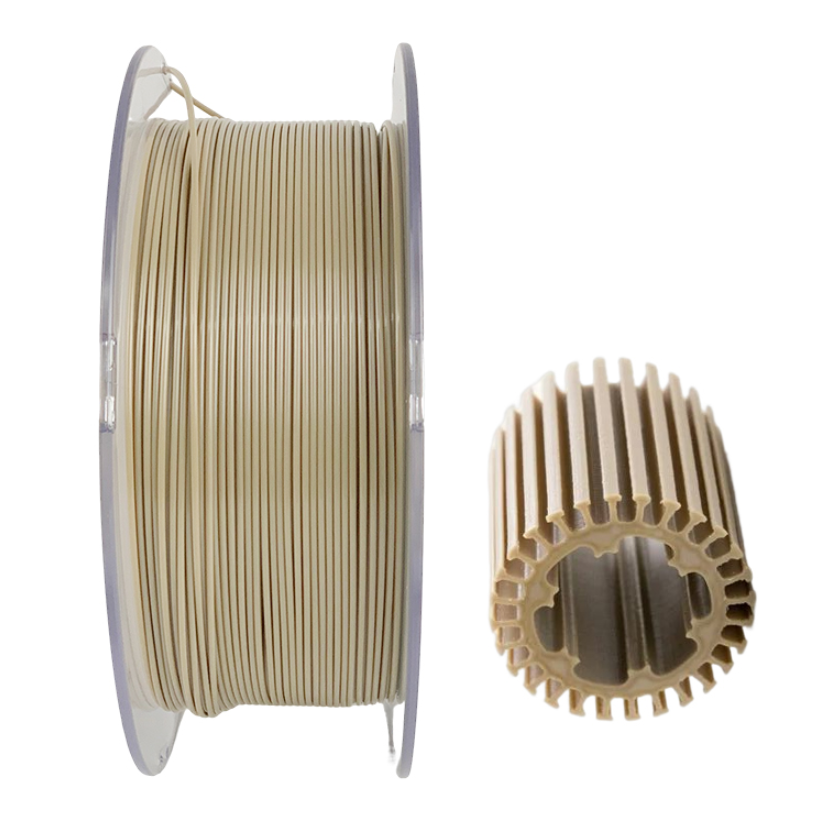
It is important to note that high-performance polymers are not suitable for beginner-level or mid-level desktop printers due to their specific requirements. These materials require much higher temperatures for the nozzle, bed, and enclosure compared to regular materials. Additionally, they tend to be more expensive and may require annealing to achieve maximum mechanical performance.
There are many high-performance filaments available, including 3DXTECH ThermaX PEEK and Markforged ULTEM 9085.
Composites
When thermoplastics are mixed with reinforcing additives, they form a composite filament that has greater strength and stiffness. Some of the commonly used additives for this purpose are chopped carbon fiber and fiberglass.
FDM 3D printing enthusiasts often prefer composites for their ability to incorporate robust materials such as carbon fiber without any changes to the printing process. The composite comprises a higher proportion of thermoplastic than additive, enabling it to be melted and extruded like a regular filament.
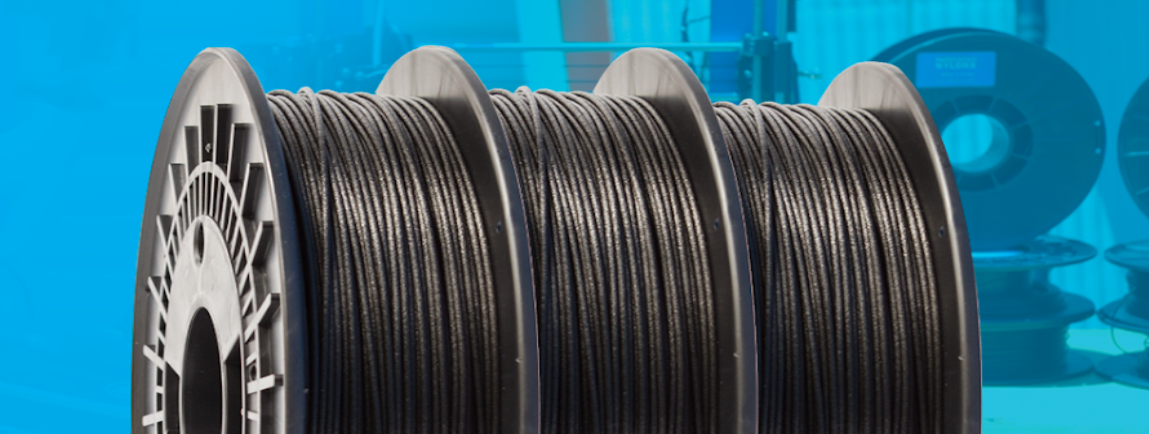
Reinforced composites can exhibit significant tensile strength. For example, MatterHackers NylonX, which is a combination of nylon and carbon fiber, boasts a tensile strength of 100 MPa.
It is important to keep in mind that the strength of FDM carbon fiber filaments is limited due to the random orientation of the chopped fibers in the material. To achieve much stronger parts, it is recommended to use advanced composite printing technologies like those from Markforged and Desktop Metal, which allow for the printing of continuous fibers.
Now with those 3D printer filament recommendations above, you can have a clear idea about what is the strongest 3d printer filament.
How to choose and find the strongest filament you want
To choose the strongest 3D printer filament that suits your needs, you need to consider two main factors: the type of strength required and the achievable level of strength based on your printing hardware.
If your parts are expected to endure constant loads and stresses, prioritize materials with high tensile strength such as PLA and PETG (budget-friendly), PC (mid-range), or composites/high-performance polymers (premium).
For parts that must withstand sudden impact, prioritize materials with high-impact strength or toughness such as ABS and TPU (consumer-grade) or high-performance polymers (premium).
Many FDM users prefer nylon and polycarbonate as they offer a good balance of affordability, tensile strength, and impact strength. For the strongest filament for 3D printer, these suggestions above can be taken into consideration.
Final Words
Choosing the best and strongest 3D printer filament for your project can be a daunting task, but with a good understanding of the properties of each filament type, you can make an informed decision that will yield the best results. It's important to consider factors such as strength, flexibility, durability, and heat resistance when choosing a filament. You should also consider the specific requirements of your project, such as the level of detail and precision needed.
As expertise in 3D printing services, Elecrow is glad to provide manufacturers or other customers with any 3D printing services they want, Elecrow can reduce the time cost customers spend on selecting the strongest 3D printer filaments, with rich experience in 3D printing, and you can count on Elecrow and skip the step of selecting 3D printer filament and enjoy one-stop 3D printing services Elecrow provides to you, just one click of 3D printing services page, upload your 3D file and get your quote. Elecrow is glad to include you in the 3D printing field and help you 3D print your projects beautifully. Elecrow even start a partner seller program for makers to bring their creative ideas to life, join our partner seller program to mass produce your ideas into solid projects and earn your profits here!
